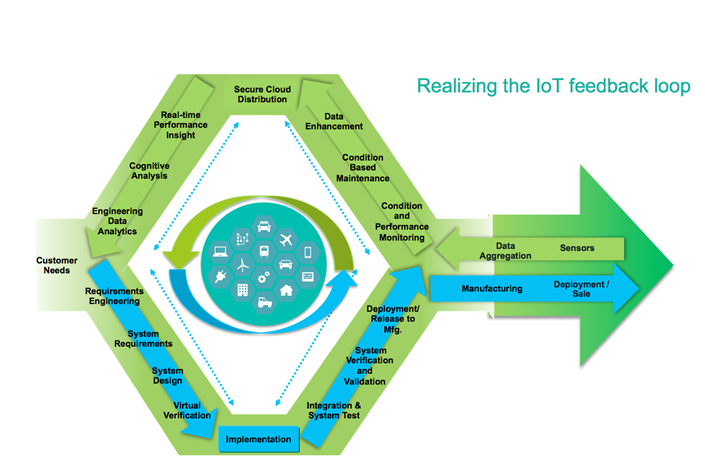Content provided by AspenCore and IBM
The Internet of Things (IoT) promises to deliver a tremendous amount of data from the billions of sensors that will serve as the eyes and ears of the IoT. The number of sensors is already growing dramatically, and it is happening in every business segment. In the oil and gas industry, a modern facility has more than 80,000 sensors and a single reservoir will produce more than 15 Petabytes (PB) of data over its lifetime. Close to 700 million smart meters will be installed in the energy and utilities sector by 2017, and these meters will be producing more than 280 PB of new data that needs to be sorted, categorized, analyzed, and acted upon.
By 2020, more than 50% of the appliances on the market will be connected — a dramatic growth from the 1% connected today. Also, by 2020, over 75% of the world’s automobiles will be “connected” and will produce 350 Megabytes (MB) of data per second. Some of this data will be critical to passenger safety, but where in the 350 MB of data per second will that data be found?

Fig. 1: Reacting to the dramatic growth in IoT data will challenge traditional business models. (Image Source: IBM)
The IoT will provide an unimaginable avalanche of data for businesses to sort, categorize, and act upon. Traditionally, this information is used to create a competitive advantage. The business with the most information wins. Unfortunately, massive amounts of IoT data can also bury a traditional business when it can’t find the important, actionable information hidden within their IoT data. The new competitive advantage now requires not only massive amounts of data, but the processes and techniques to extract critical information and then identify the associated insights that can be turned into competitive advantages.
In addition to the growth in IoT data, there is an even more concerning growth in system complexity. With the massive interconnectivity that the IoT provides and the associated device interactions that result, system complexity grows at an exponential rate. As just one example of this growth in complexity, consider the difficulty in understanding all of the unintended consequences that complex device interactions can generate. Users may ask devices to do things in unexpected ways that will impact other connected devices and, thus, the entire system. Bandwidth requirements may shift, response times may extend, and the user experience may degrade. This can result in users trying unexpected ”work-arounds” that further impact system performance.
Increasing complexity impacts product development
Providing security, reliability, and quality of service while adapting quickly to changing user requirements in this new, more complex environment is overwhelming previous product development tools and methodologies. The traditional development approach has used a linear process, with requirements defined up front and various development stages used to create an implementation that balances all the requirements and meets various cost, form factor, and compliance regulations without slipping the schedule. New requirements invariably show up late in the development process and adversely impact schedules, costs, and quality. With the exponential increase in complexity that IoT systems create, we need a dramatically different approach to product development.
Instead of a fixed, linear methodology for product and system development, what we need is a continuous engineering methodology, as illustrated in Fig. 2 below. This approach assimilates all aspects of product and system engineering into an integrated whole, with requirements driving the design, verification, implementation, testing, manufacturing, and deployment activities continuously, not just at the beginning of the project. Additionally, once IoT systems are deployed, new data is generated that can be used to monitor performance and provide maintenance proactively. The data can also be checked to determine if user experiences and operations are generating expected outcomes. If new use cases and strategies emerge from the analysis, new requirements can be provided at any point in the development process to accelerate system improvements and deliver increased customer satisfaction. This approach delivers a dramatically different system to the user and creates a compelling competitive advantage in the marketplace.

Fig. 2: Continuous engineering redesigns the traditional development process. (Image Source: IBM)
IBM’s Watson IoT Platform drives continuous engineering methodologies
Creating a successful continuous engineering methodology hinges on the availability of actionable information during the development process. This data can come from the mountain of documents produced in previous projects, including specifications, requirements, test results, and simulation — just to mention a few — as well as from data received during operation (the top part of the process shown in Fig. 2 ) that captures operational metrics for wear, user interactions, error conditions, requirement shifts, and many other associated system measurements. Categorizing, sorting, prioritizing, and analyzing these mountains of data would be an overwhelming effort without significant help.
IBM’s Watson IoT Platform provides a set of capabilities that directly address the complexity challenges that the IoT brings to engineering development. Watson isn’t explicitly programmed. It learns from experiences with the environment and interactions with people. It provides a cognitive approach to systems and processes and understands goals and objectives. It can integrate and analyze mountains of data and can find the important connections. For engineering development, Watson might act as the “guy a couple of cubicles over” who was on every previous project and knows where all of the important and relevant documents, test procedures, and simulations are located. With Watson, this “institutional memory” can be extracted directly from development data archives and used as needed. Watson never goes on vacation, never quits, and never retires.
Conclusion
The IoT presents many opportunities and challenges to traditional business units as well as engineering development methodologies — most notably, the increase in data availability. The sudden proliferation of information that IoT offers must be addressed accordingly — on both fronts — in order to ensure long-term sustainability. Companies will soon be expected to evolve their traditional approaches and cognitive computing capabilities, like those available from IBM’s Watson IoT Platform, in order to better sift through the avalanche of available data and identify the key insights that can be turned into market-winning competitive advantages.
Next steps and additional information:
- Learn more about the Watson IoT Platform
- Play with Watson IoT Platform
- Start your free trial of Watson IoT Platform today
- Connect to Raspberry Pi
- Connect to DragonBoard
- Set up voice interaction for IoT apps
- Discover more recipes
Content provided by AspenCore and IBM
Advertisement
Learn more about IBM





